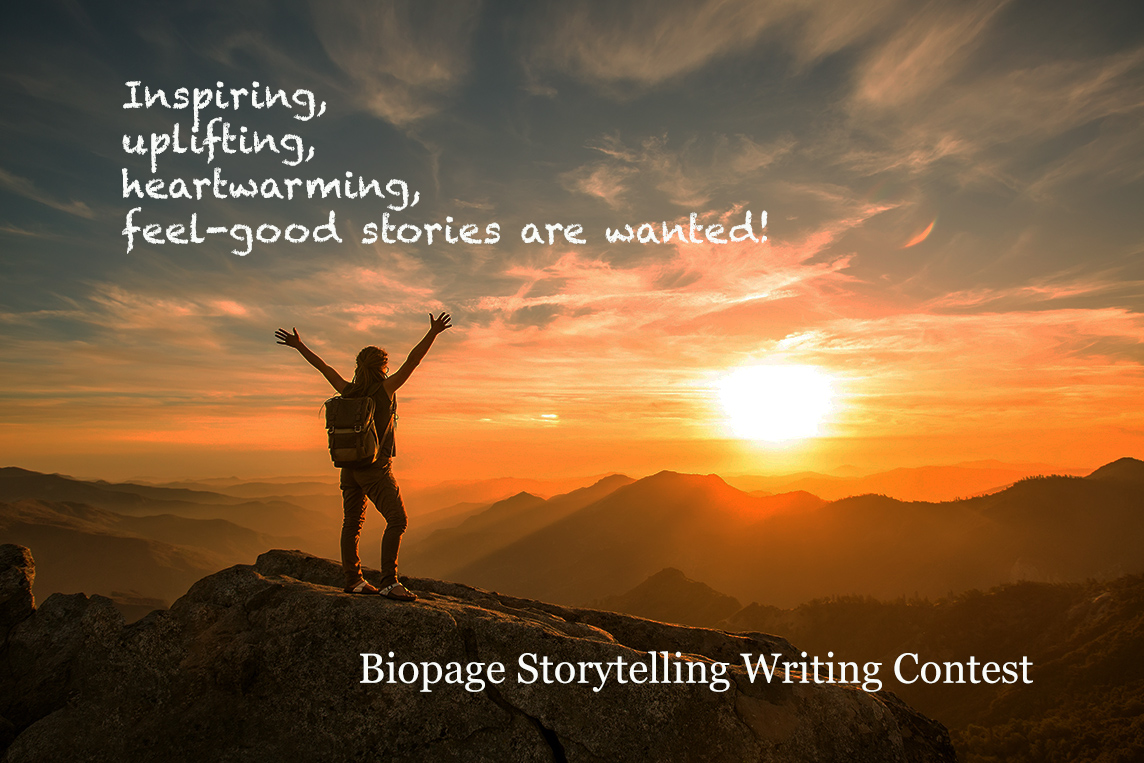In the old days, in the village of Elms, a wandering family of unknown origin settled down. They built a house on the edge of the fields, near the ghost forest. This family consisted of only an elderly couple. Wherever they went, they went together. The wife was always silent and solemn, never uttering a word. The husband was tall and gaunt, with a face like iron and a nose resembling a bird's beak. His eyes were cloudy and sunken, exuding a cold phosphorescent glow. The husband was a master hunter. His flintlock rifle seemed to have eyes. Whenever he raised it, birds and wild animals rarely escaped death. Behind their house, there were heaps of bird feathers and animal bones piled up like mounds. The bird feathers were disheveled and black as ink, while the animal bones were limestone-white, dotted with yellowish, foul-smelling marrow stains. These piles resembled graves. The hunter seemed like the embodiment of Death in the forest. Birds and animals feared him. The other hunters in Elms were both envious and resentful of him. He spared no creature within the range of his rifle. It was said that someone once saw him shoot a peacock in mid-dance. A peacock in mid-dance, with its head curved like a blade of grass, its tail fanned out in a semicircle displaying vibrant colors, sunlight reflecting off it like golden flames, its legs gracefully swirling. Only love could swirl so elegantly. And then – “Boom” – his rifle fired, releasing a red flame. The peacock fell, its iridescent wings stained with blood. The old wife came, dry and dark, silently picking up the peacock and placing it in her basket. However, the old man spent his life hunting only common birds and animals. He never captured any large animals weighing several hundred pounds. His rifle could only shoot small, foolish creatures. This was his torment. The entire village of Elms shunned the couple, not speaking or socializing with them. Seeing them, people would turn away. Thus, the old hunter lived a lonely life with his silent wife. By the end of that year, the forest of Elms was in upheaval, trees withered, birds disappeared, and no trace of animals was found. The villagers suffered greatly, claiming that Then (the deity) had begun to punish them. The wandering hunter also found it difficult to make a living. The couple wandered the forest. For the first time in his life, the old man faced this situation. For three lunar weeks, his rifle remained silent. He would wake before the third rooster crow and return late at night. His emaciated wife no longer had the strength to follow him and stayed home, tending a fire that burned with a ghostly blue flame, not red but green like wolf eyes. One time, the old man was away for a whole week. He was exhausted, his knees buckled, and his muscles felt like they could be pinched off like leeches soaked in blood. He had trudged everywhere without finding anything. Not even a sparrow or a butterfly. He was anxious and frightened. Was Then punishing the world as rumored? Finally, exhausted, the old man staggered home. At the stream near the village, he paused and looked at his house. There was a light, a ghostly blue light. Surely his wife was still waiting. He closed his deep, cloudy eyes. After a moment's thought, he turned back to the forest. His nose had caught the scent of animals... He was in luck. He saw it. The peacock was dancing. Its feet moved gracefully to the right, its tail spread out in a circle, shifting to the left, the intense blue on its head feathers glistening. The old man raised his rifle: “Boom!” The shot echoed. He heard a piercing scream. He ran to the fallen creature. It was his wife. She had gone to the forest to wait for him, holding a peacock feather. The hunter lay face down in the pool of blood on the decaying leaves, thick and musty like the smell of rats. His mouth gurgled like a wild boar's. He lay there for a long time. Black clouds hung low, the forest darkened, hot and stifling like a fevered body. Near dawn, the old man suddenly sprang up like a squirrel. He had the idea to use his wife's corpse as bait to hunt the biggest animal of his life. He lay in the bushes near her decaying body, rifle loaded, anxiously waiting. But Then punished him. No animals came, only death approached. Days later, they pulled his crooked body from the bushes. A bullet wound pierced his forehead. He had finally hunted the biggest animal of his life.
Plan: Introduction: The Origin of Life Main section: Plant kingdom Animal world Microorganisms Summary: I am a part of nature There are different opinions about the origin of life. In the divine books, it is stated that living creatures were created by the Supreme Creator in a certain time and place based on a certain plan. It is written in the Qur'an that the world was created in 6 days. Irish archbishop Asher calculated that the world was created in October 4004 BC. According to creationism, life arose once as a result of a supernatural event and has remained unchanged ever since. Qad. According to the theories that appeared in China, Rome, and Babylon, life "came into existence spontaneously (spontaneously) from the things that exist in nature. The Greek philosopher Empedocles (490-430 BC) believed that life is from air, earth, fire and water; Democritus ( 460-370 BC) argued that life came from clay; Thales (625-547 BC) suggested that plants and animals arose from clay. The origin of the plant corresponds to the first development periods of life on earth. During the Archaean era (3 billion years ago), organisms similar to blue-green algae (cyanobacteria) appeared. True algae are thought to have appeared in the Proterozoic era, and green and red algae in the early Paleozoic. It is possible that the first higher plants - rhyniophytes - originated at the border between the Proterozoic and Paleozoic periods. The plant is of great importance in the life of all living organisms on earth. Life of animals and people cannot be imagined without plants. A plant with only green chlorophyll collects sunlight energy by synthesizing organic compounds from inorganic substances. At the same time, a plant takes S02 gas from the atmosphere and releases oxygen into the atmosphere, which is necessary for the respiration of almost all living organisms. In this way, the green plant maintains the constant composition of the atmosphere. Plants are the basis of the food chain as producers of organic matter. Оne of the major divisions in the organic world system. It is estimated that animals appeared in the ocean water 1-1.5 billion years ago in the form of microscopic, chlorophyll-free amoeba-like protozoa. The oldest fossils of animals are no more than 0.8 billion years old. The first fossils of multicellular animals - gastropods, worms, benthic arthropods can be found from the last Cambrian layers (690-570 million years ago). Animals are heterotrophic organisms, that is, they feed on ready-made organic matter. Due to active metabolism in animals, their growth is limited. In the process of evolution, the formation of the functional system of various organs: muscles, subtraction, respiration, blood circulation, reproductive and nervous systems is considered one of the most important characteristics characteristic of animals. Animal cells differ from plants in having a hard cellulose shell. However, the difference between animals and plants is relative. A microscopic organism that can appear as a single cell or a colony of cells. Microorganisms include bacteria, actinomycetes, yeasts, viruses, molds, microscopic algae, and others. Bacteria are a large group of single-celled microorganisms. Viruses (Latin: virus - poison) are microorganisms that multiply only in living cells and cause infectious diseases in plants, animals and humans. In the past, the term "viruses" was used to refer to various disease-causing agents, especially unknown agents. After the French scientist L. Pasteur proved the role of bacteria in the origin of several diseases, the concept of viruses began to be used as a synonym of the word "microbe". An important difference between these two groups of disease-causing agents, i.e., bacteria and viruses, was established by the Russian scientist D.I. Ivanovsky (1892) and later others when they proved that tobacco mosaic and ungulate proteins pass through a bacterial filter. Nature is an existence that exists both before the appearance of man and with the participation of man. In general, this is the world, man, universe; micromacromegaworlds; inanimate and animate. In the narrow sense, it is an object studied by natural sciences. Nature is subject to laws independent of people and society. Man is a part of nature. Man cannot change the laws of nature, he can only master the elements and parts of nature using the laws. The concept of nature is also considered as a set of natural conditions for the existence of human society. Humans work to live, and work (eg, farming, construction, industry), brain activity, and others change some aspects of nature. Material wealth created by a person, that is, in the process of social labor, is conditionally called "second nature". For example, 92 chemical elements from hydrogen to uranium are naturally occurring, and those discovered later are artificial. All man-made synthetic chemical compounds, man-made atomic and nuclear energies are "second nature".
Being voiceless in the grand narrative of our world's events is a profound challenge, as the relentless march of human dominance continues to overshadow the plight of those without the power to speak up. Throughout the annals of history, humanity's footprint on the Earth has been marked more by acts of destruction than preservation. It commenced with the cataclysmic horrors of nuclear warfare and the devastating impact of atomic bombs, tragedies that elicited vocal outcry from our species, but left the voices of countless other creatures unheard. While we, as human beings, have always found our voices to advocate for our kind, the same cannot be said for the myriad of wildlife species that inhabit our planet. The cries of the monkeys, the roars of the lions, the stealthy prowls of the tigers—these voices have been drowned out by our own, relegated to the sidelines of discourse and action. We may consider ourselves the custodians of the ecosystem, but what of the other tenants who share this planet with us? From the microscopic organisms dwelling in our oceans to the majestic creatures roaming the savannas, we have systematically dismantled and disregarded their habitats, pushing them closer to the brink of extinction with each passing day. As the global dialogue surrounding climate change gains momentum, much of the focus remains fixated on reducing carbon emissions and mitigating environmental degradation. Yet, conspicuously absent from this discourse is a concerted effort to safeguard and enhance the natural habitats of wildlife. How can we claim to be making progress towards achieving the Sustainable Development Goals (SDGs) when we overlook the fundamental importance of preserving biodiversity and restoring balance to fragile ecosystems? Surveying the current state of our planet's ecosystem, it becomes alarmingly clear that many terrestrial species are teetering on the precipice of oblivion. Without a voice to advocate on their behalf, they rely solely upon our collective stewardship to shield them from the perils posed by human activity. It falls upon us, as guardians of this planet, to rise to the challenge and enact meaningful change to ensure their survival for generations to come. In addressing the systemic threats facing wildlife populations, we must first confront the root causes of their decline. Habitat destruction, driven by urbanization, deforestation, and industrial expansion, stands as one of the foremost threats to biodiversity. By prioritizing the conservation and restoration of natural habitats, we can provide sanctuary for imperiled species and mitigate the irreversible loss of biodiversity. Furthermore, we must reckon with the pervasive impacts of pollution and environmental degradation on wildlife populations. From plastic pollution suffocating marine life to toxic chemicals contaminating terrestrial habitats, human-induced pollution poses a grave threat to the health and well-being of countless species. Through concerted efforts to reduce our ecological footprint and implement sustainable practices, we can safeguard the integrity of ecosystems and mitigate the detrimental effects of pollution on wildlife. Equally imperative is the need to address the interconnectedness of ecosystems and the cascading effects of species loss. The extinction of one species can trigger a domino effect, disrupting delicate ecological balance and imperiling entire ecosystems. By recognizing and preserving the intricate web of life that sustains our planet, we can foster resilience in the face of environmental challenges and safeguard biodiversity for future generations. Moreover, we must acknowledge the inherent value of wildlife beyond their instrumental utility to human society. Each species, no matter how seemingly inconsequential, plays a unique and irreplaceable role in the tapestry of life. From pollinating crops to regulating ecosystems, wildlife provides invaluable ecological services that are essential to the health and functioning of our planet. By embracing a holistic ethic of conservation that respects the intrinsic worth of all living beings, we can forge a more sustainable and harmonious relationship with the natural world. In conclusion, the imperative to protect and preserve wildlife extends far beyond mere moral obligation—it is an essential prerequisite for the survival of our planet and future generations. As stewards of this Earth, we possess both the power and the responsibility to safeguard biodiversity and ensure the continued existence of all living creatures. By amplifying the voices of the voiceless and championing the cause of wildlife conservation, we can forge a path toward a more equitable and sustainable future for all.










